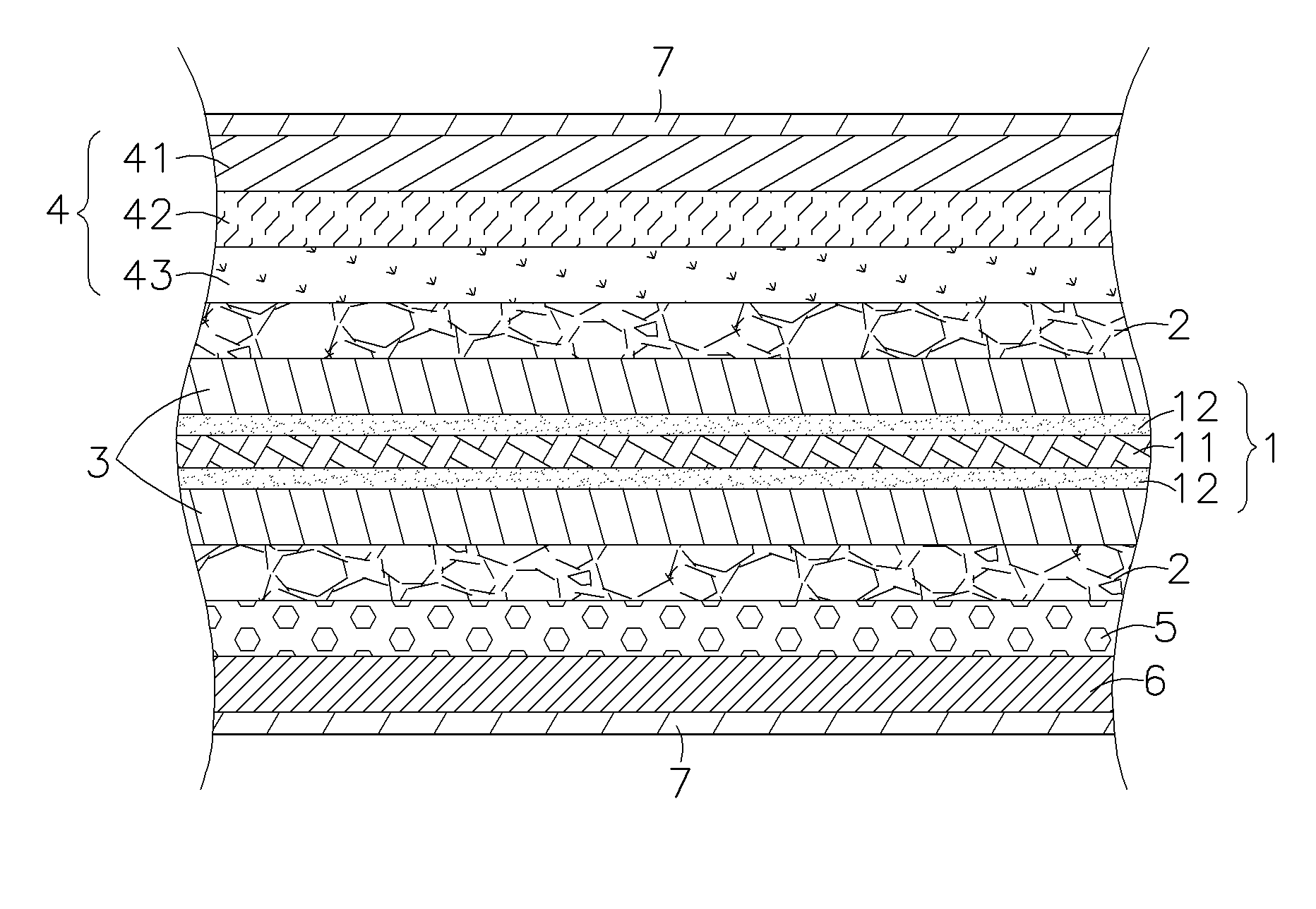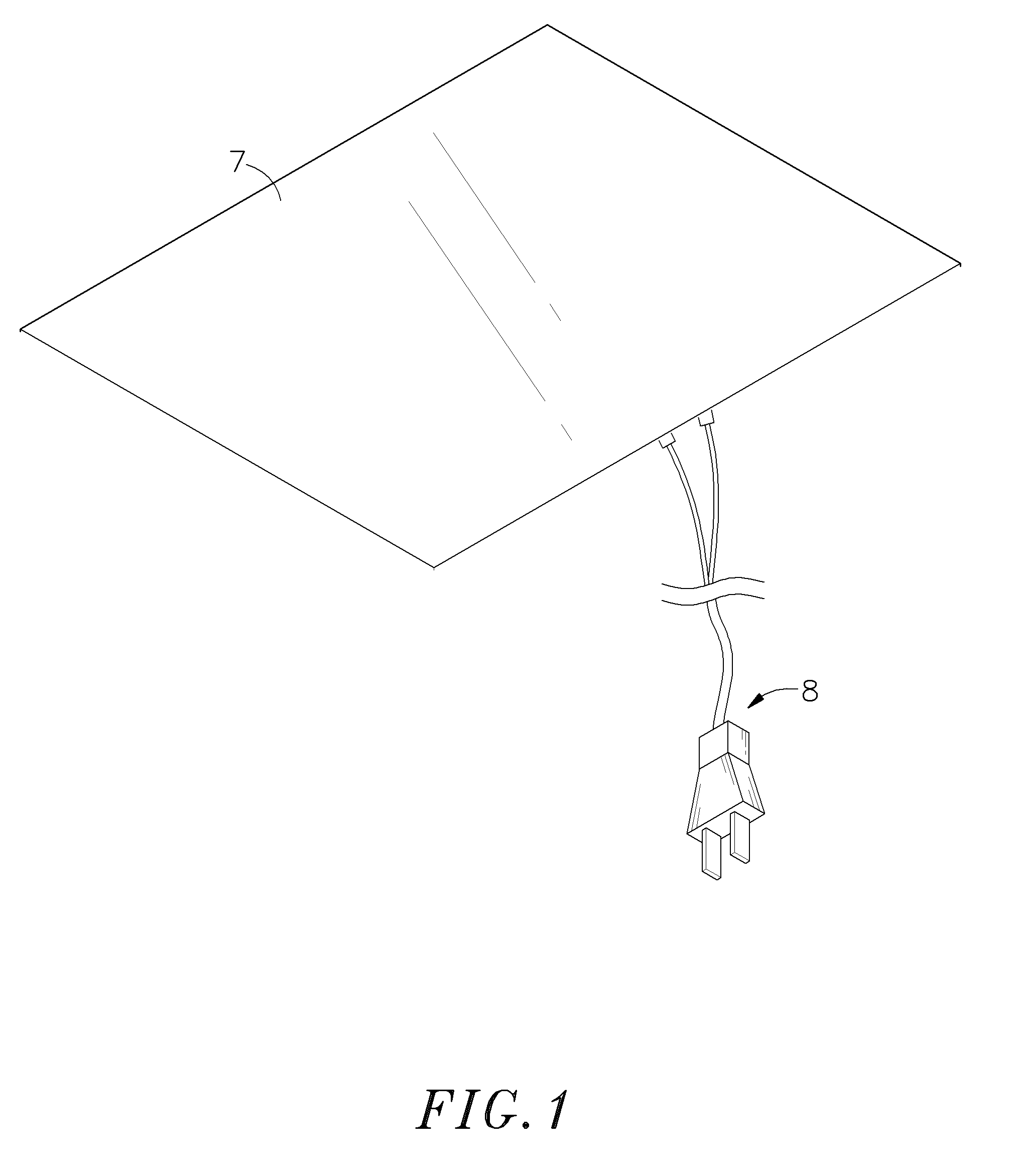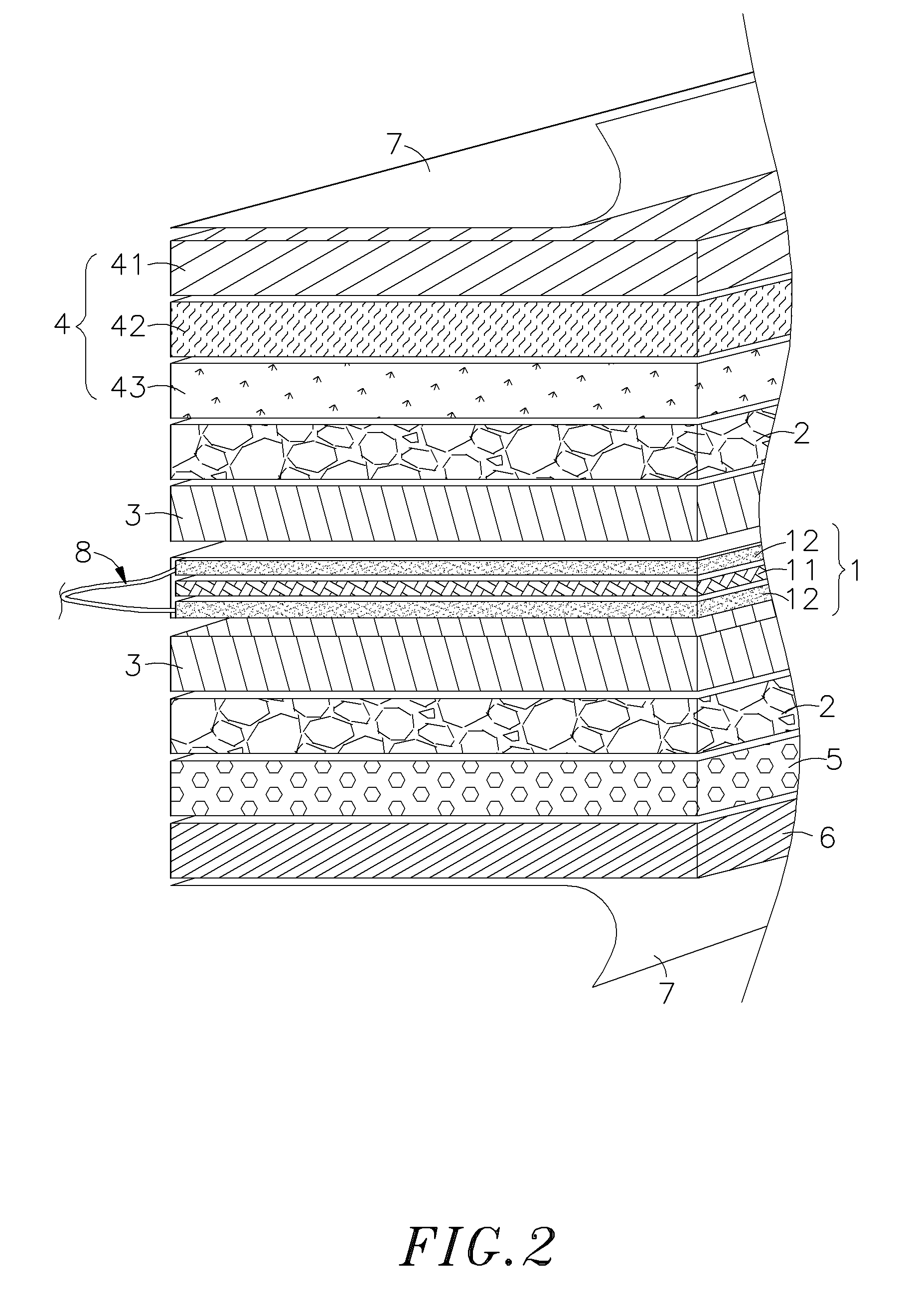Light-regulation membrane
a technology of light regulation membrane and light-regulating film, which is applied in the direction of thin material processing, instruments, chemistry apparatus and processes, etc., can solve the problems of inability to effectively block ultraviolet light, and inability to achieve perfect heat insulation effect of conventional heat insulation films, etc., to achieve excellent support effect, easy installation, repair and replacement of light-regulating membran
- Summary
- Abstract
- Description
- Claims
- Application Information
AI Technical Summary
Benefits of technology
Problems solved by technology
Method used
Image
Examples
Embodiment Construction
[0019]Referring to FIGS. 1-3, a light-regulation membrane in accordance with the present invention is shown comprising a PDLC (polymer dispersed liquid crystal) film 1, two polymer compound layers 2, a plurality of PSA (pressure sensitive adhesive) layers 3, a surface structure 4, an anti-radiation layer 5, an adhesion layer 6, and two protective films 7.
[0020]The PDLC film 1 comprises a liquid crystal layer 11 and two conducting layers 12. The liquid crystal layer 11 is sandwiched between the two conducting layers 12. The liquid crystal layer 11 can be prepared from a compound of hydroxyl polyfunctional (meth) acrylates and nematic liquid crystal cured with a polyisocyanate compound crosslinking agent. The conducting layers 12 are made by means of depositing ITO (indium tin oxide) on a base layer of PET (polyethylene terephthalate by means of spattering deposition.
[0021]The polymer compound layers 2 are respectively formed on the two conducting layers 12. Further, the polymer compo...
PUM
| Property | Measurement | Unit |
|---|---|---|
| surface structure | aaaaa | aaaaa |
| adhesion | aaaaa | aaaaa |
| pressure sensitive | aaaaa | aaaaa |
Abstract
Description
Claims
Application Information
 Login to View More
Login to View More - R&D
- Intellectual Property
- Life Sciences
- Materials
- Tech Scout
- Unparalleled Data Quality
- Higher Quality Content
- 60% Fewer Hallucinations
Browse by: Latest US Patents, China's latest patents, Technical Efficacy Thesaurus, Application Domain, Technology Topic, Popular Technical Reports.
© 2025 PatSnap. All rights reserved.Legal|Privacy policy|Modern Slavery Act Transparency Statement|Sitemap|About US| Contact US: help@patsnap.com



